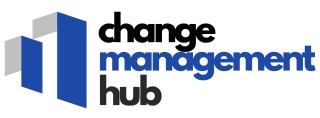
Understanding the Role of Release Notes in Change Management
In the realm of change management, release notes play a crucial role in ensuring that all stakeholders are well-informed about product updates and changes. A release note is not merely a list of changes, features, or bug fixes; it is a powerful communication tool that can greatly impact user experience and successful product adoption. Release notes help bridge the gap between technical teams and users, providing clarity and context around software release activities.
Facilitating Smooth Transitions
One of the primary functions of release notes is to facilitate the smooth transition for users when a product update or software release occurs. By offering detailed insights into what’s new, improved, or fixed, release notes help users understand the practical implications of changes and how new features might enhance their experience. This understanding can lead to better user adoption and overall satisfaction with the product.
Enhancing Communication
Effective release notes also strengthen communication between product teams and customers. Providing clear, concise updates ensures users feel informed and valued. Furthermore, release notes can be tailored to address different audiences, be it technical teams, management, or end-users, ensuring that everyone receives the relevant information they need.
Supporting Change Management Strategies
Incorporating release notes into a broader change management strategy helps align product teams with organizational goals and customer expectations. By doing so, release notes serve as an integral part of maintaining transparency and building trust. We highlight how good release note practices link toenhancing your leadership skills and supporting strategic initiatives across an organization.
Key Components of an Example Release Notes Template
Essential Elements of a Release Notes Template
Creating a release notes template is a crucial step in ensuring consistency and clarity in your product updates. A well-structured template helps teams communicate effectively with users, providing them with the necessary information about changes and features in the software release. Here are the key components to include:
- Title and Version Number: Clearly state the product release name and version. This helps customers quickly identify the update they are reading about.
- Release Date: Include the date when the release is made available. This provides context for users and helps them track updates over time.
- Overview: A brief summary of the changes and features introduced. This section should give a high-level view of what users can expect.
- New Features: Highlight any upcoming features or enhancements. Use bullet points for clarity and to make it easy for users to scan.
- Bug Fixes: List any bug fixes that address previous issues. This reassures customers that their feedback is valued and acted upon.
- Technical Details: For technical audiences, include more detailed information about the changes. This can help teams understand the impact on their systems.
- Contact Information: Provide a way for users to reach out if they have questions or need support. This enhances the user experience by showing that help is readily available.
By incorporating these elements, your release notes will not only inform but also engage your customers. For more insights on how to enhance communication in change management, check out this resource.
Best Practices for Writing Clear and Concise Release Notes
Best Approaches for Articulating Release Notes Communicatively
- Prioritize Clarity: Always aim to convey updates clearly. Your release notes should be informative yet simple to navigate. Begin with outlining the most significant changes and ensure each point is straightforward and understandable. This ensures your users grasp the updates without confusion.
- Adopt a User-Centric Approach: When documenting updates, empathize with your users. Try to foresee their questions and address these proactively within your notes. It may be beneficial to include examples of how certain features can be used to enhance the user experience.
- Be Concise and Direct: While it's essential to provide comprehensive details, avoid lengthy descriptions. Use bullet points where possible to break down information effectively, contributing to the note's readability.
- Include Relevant Visuals: Where applicable, incorporate screenshots or diagrams directly into your notes. Visuals can significantly aid in illustrating changes, particularly when introducing new product features or explaining complex technical updates.
- Maintain Consistency: Consistency aids in setting user expectations for every software release. Using a standardized notes template uniformly aids in minimizing confusion and provides structure, making information retrieval more efficient for team members and customers alike.
- Proofreading and Revision: Before publishing, ensure your notes are free from errors. A well-articulated release note solidifies trust in your product release process. Engaging several team members in the revising process might be essential to guarantee the quality of a good release document.
For more insights on enhancing your skills in crafting release notes and problem-solving, consider this resource for developing effective communication strategies within your organization.
Common Pitfalls to Avoid in Release Notes Creation
Recognizing Potential Missteps in Drafting Release Notes
Crafting release notes can sometimes become a minefield of common mistakes if not approached carefully. Here are some pitfalls to avoid to ensure your release notes effectively convey crucial updates and changes:- Overly Technical Language: While it's important to include technical details, an overload of jargon can alienate a broader audience, including users who are not tech-savvy. Aim for a balance that accommodates various expertise levels.
- Information Overload: Release notes should be comprehensive yet concise. Pumping in too much information can overwhelm users. Focus on key updates and changes, ensuring clarity without sacrificing detail.
- Neglecting Audience Diversity: Different audiences might interact with the notes, from technical teams to casual users. Tailor content by highlighting the most relevant features and benefits for each segment.
- Missing Key Elements: A common mistake is leaving out essential components like contact information or links to additional resources. Ensure your notes are complete to help users find further support if needed.
- Lack of Consistency in Format: Using a notes template can ensure consistency across product updates. This familiarity helps customers and teams know where to find information each time.
- Failing to Highlight Benefits: Focusing too much on the technical specifics without emphasizing the user benefits can miss opportunities to engage users. Always communicate how changes improve the product experience.
Tailoring Release Notes for Different Audiences
Customizing Release Notes for Specific Audiences
One of the key aspects of change management is ensuring effective communication of updates to diverse audiences. When crafting release notes, it is essential to tailor the content to fit different types of users who interact with the product. This could be customers looking for practical information, technical teams seeking detailed specifications, or business stakeholders interested in strategic features.
To address these varying needs efficiently:
- Identify Your Audiences: First, understand who will be reading the release notes. Segment your audience into categories such as end-users, technical teams, and management. Knowing your reader will help in crafting a targeted narrative.
- Select Appropriate Language: Use language that aligns with the audience's knowledge level. For technical updates, detailed jargon might be suitable, while simplified terms are better for general users.
- Highlight Key Features: For product management and business teams, emphasize strategic product changes and benefits, such as upcoming features or enhancements that align with business goals.
- Provide Technical Details When Needed: For technical audiences, include specifics about software updates, bug fixes, and technical improvements. A release notes template can help streamline this process.
- Example-Driven Approach: Use real-world examples to illustrate how changes impact users, boosting understanding and engagement.
- Consider Format and Structure: Formats such as bullet points, tables, or headings can help create a more readable and organized document. A well-structured table of contents can aid in navigating the release notes efficiently.
By personalizing release notes to meet the needs of different audiences, you help users understand changes effectively, thereby enhancing the overall user experience and ensuring smoother software transitions.
Tools and Resources for Streamlining Release Notes Processes
Streamlining the Writing and Distribution Process
In the dynamic world of change management, it's imperative to not only write effective release notes but also to streamline the process for efficiency and consistency. Harnessing the right tools and resources can make all the difference in producing clear and concise notes that effectively communicate product updates and changes to users.
Consider utilizing specialized software to manage and distribute your release notes. Such tools can offer features that help teams stay organized, manage version histories, and ensure that updates are communicated promptly. These resources often offer templates that align with best practices, making it easier to craft notes that include all the necessary components, such as bug fixes, new features, and technical improvements.
Cloud-based documentation platforms are another effective way to ensure that all team members have access to the same resources and can collaborate in real-time. This promotes a smoother workflow, particularly if team members are working from various locations or time zones. Using a centralized system, notes can be easily updated to reflect any necessary changes or to tailor content for different audiences.
Moreover, automation tools can significantly cut down on the time required to notify users about updates. Whether through email notifications, in-app messages, or updates on your company’s website, automating these processes ensures timely communication of product releases. This proactive approach not only aids in keeping customers in the loop but also enhances the overall user experience by allowing them to quickly adapt to any changes.
Finally, it is worthwhile to regularly review and optimize your release notes process. Analyze examples of good release notes to refine your strategies continually. Regular feedback from customers and users can also help in honing the readability and usefulness of your notes. With thoughtful selection and implementation of these tools and techniques, your release notes can be a great asset in communicating effectively and retaining users' trust.













